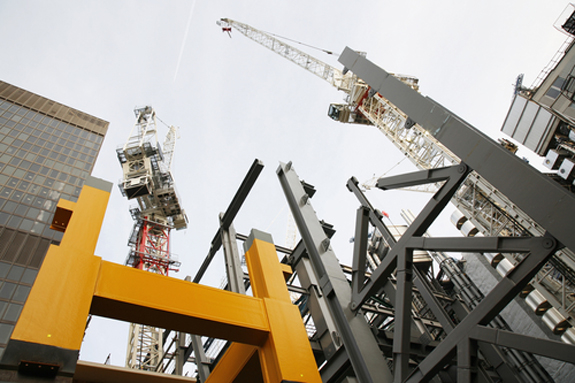Builders Risk: 3 Important Definitions That Vary By Policy

By: Jacquelyn Connelly
Jeff Benson, vice president, builders risk at Victor O. Schinnerer & Company, is often approached by young producers who have their eye on the builders risk insurance business.
His No. 1 piece of advice? “I point them to the coverage forms, and I point them to the differences in these forms,” he says. “That’s how you should sell it.”
Here are three crucial builders risk definitions that vary by policy.
1) Deductible. Most builders risk deductibles are percentage-based. But particularly in catastrophe-prone regions, “the way carriers define how they calculate that is very different,” Benson explains.
Say the policy includes a 1% wind deductible. “How do they calculate the 1%? I’ve seen it done many different ways,” says Benson, who adds that the approach can “dramatically” impact what the insured ends up paying out of pocket.
“You can’t assume you know what it means,” Benson says. “It’s completely different wording even for something as basic as a deductible, so you have to read very carefully.”
2) Named insured. On larger property accounts, general property policies may contain a sublimit of liability for builders risk, says Joe Vierling, senior vice president, XL Catlin North American Construction Property. But if an insured opts for that route over a standalone builders risk policy, they may end up in a jam down the line.
“It’s part of an existing property program, the contractor may not be a named insured, which could lead to a problem with the loss adjustment,” Vierling explains. “If you take a look at a standard builders risk policy, the named insureds are the owner or the principal, and then the general contractor and subcontractors of every tier. You’re not going to be subrogated against if you’re a named insured on a policy.”
“It really comes down to subrogation and waivers of subrogation,” agrees Mike Perrotti, senior vice president, XL Catlin inland marine practice leader. “The contracts they’re using to build under often have a lot of requirements for layers of waivers of subrogation, and the property policy may not adequately address that.”
3) Flood. Different builders risk policies handle special perils differently, including flood—the significance of which requires no explanation in the months following Hurricane Harvey. “You’d think flood is flood, but I’ve seen all kinds of things,” Benson says.
For example, if the water in a dam or levee has to be released to prevent it from breaking, “some forms would cover that in their definition of ‘flood,’ and some wouldn’t—they might argue that’s manmade,” Benson points out.
While the core builders risk coverage form often excludes flood, “it’s almost always added back,” Perrotti says. But “to what degree we add it back really is going to depend on what the exposure is. It may be something we provide full flood and full limits for, and it may be something we have sublimited with a very high deductible. Each definition, depending on the carrier, may read very differently. One could be much broader than the other.”
In some cases, for example, a policy may contain an absolute flood exclusion, “but then there will be a give-back for backup of sewers and drains, either for the full limit or perhaps a sublimit,” explains Alexander McGinley, vice president, marine, XL Catlin. “It’s usually included as an additional coverage.”
“Read the form carefully,” Benson summarizes. “If the policy excludes flood and the cause of loss is flood, there’s no other coverage after that. You may have all these coverages built in that sound really good, but if the initial cause of the loss was flood, you might not have any coverage at all.”
Jacquelyn Connelly is IA senior editor.









